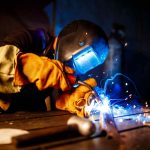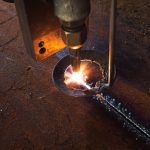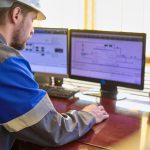Welding is a key process in many industries, and its quality impacts the safety and durability of products. Implementing predictive analytics allows failures to be anticipated, defects to be reduced, and production times to be optimized.
Companies that adopt these solutions improve efficiency and reduce operating costs.
What is Predictive Analytics in Welding?
Predictive analytics in welding uses historical and real-time data to anticipate problems before they occur. With advanced algorithms and artificial intelligence models, it is possible to detect patterns and predict defects in welded joints.
This approach enables action to be taken before a failure affects production, avoiding rework and material waste.
Benefits of Predictive Analytics in Welding
Companies that integrate predictive analytics into their welding processes gain advantages in quality, cost, and productivity. Key benefits include:
Defect Reduction
The system identifies variables affecting weld quality, such as temperature, speed, and material type. By detecting deviations in these parameters, real-time adjustments can be made.
Optimized Maintenance
Welding equipment wears out with continuous use. Through predictive analytics, it is possible to determine when a component needs maintenance, avoiding unexpected downtime and extending equipment life.
Cost Savings
Anticipating defects reduces the number of rejected parts and production times. This optimizes material use and minimizes costs related to rework and waste.
Greater Operational Efficiency
Predictive analytics enables automatic adjustments to welding parameters, ensuring a more stable and consistent process. This reduces manual intervention and improves final product consistency.
Applications of Predictive Analytics in Welding
The use of predictive models extends across various industrial sectors. Some of the most relevant include:
Automotive Industry
Welding is essential in manufacturing car bodies and structural components. With predictive analytics, strong joints are ensured that meet quality standards.
Aerospace Sector
Safety is a priority in aerospace. Predictive systems help prevent failures in critical welds, reducing the risk of structural failures in aircraft and components.
Construction and Infrastructure
Welded structures in bridges and buildings must withstand extreme loads. Predictive analytics helps improve joint strength and detect potential failures before they pose a risk.
Metallurgical Industry
In manufacturing machinery and metal parts, ensuring weld quality is essential. Defect prediction prevents the production of faulty batches and improves process efficiency.
How is Predictive Analytics Implemented in Welding?
To apply this technology in a production environment, it is necessary to combine advanced software with sensors and real-time data collection. The process includes several steps:
Data Capture
Sensors installed on welding equipment collect information on temperature, pressure, electric current, and other key parameters.
Data Processing
The data is analyzed using artificial intelligence and machine learning algorithms, identifying patterns and correlations between variables.
Failure Prediction
The software detects deviations in the process and issues alerts in case of potential defects. This allows adjustments before a problem occurs.
Real-Time Optimization
Some systems can automatically modify welding parameters to correct deviations without human intervention.
Challenges in Adopting Predictive Analytics
Despite its advantages, implementing predictive analytics in welding presents some challenges:
Integration with Existing Systems
Many factories operate with machinery not designed to collect real-time data. Adapting these systems may require investment in sensors and software.
Staff Training
Predictive analytics requires knowledge in data analysis and specialized software management. Training operators is key to unlocking its potential.
Initial Costs
Implementing predictive solutions requires an investment in digital infrastructure. However, savings in defects and maintenance offset this cost in the long term.
Predictive analytics in welding improves quality, reduces defects, and optimizes equipment maintenance. Companies from various sectors are adopting this technology to increase efficiency and reduce operational costs.
Investing in predictive tools is a strategic decision that helps industries improve competitiveness and ensure more reliable production processes.






